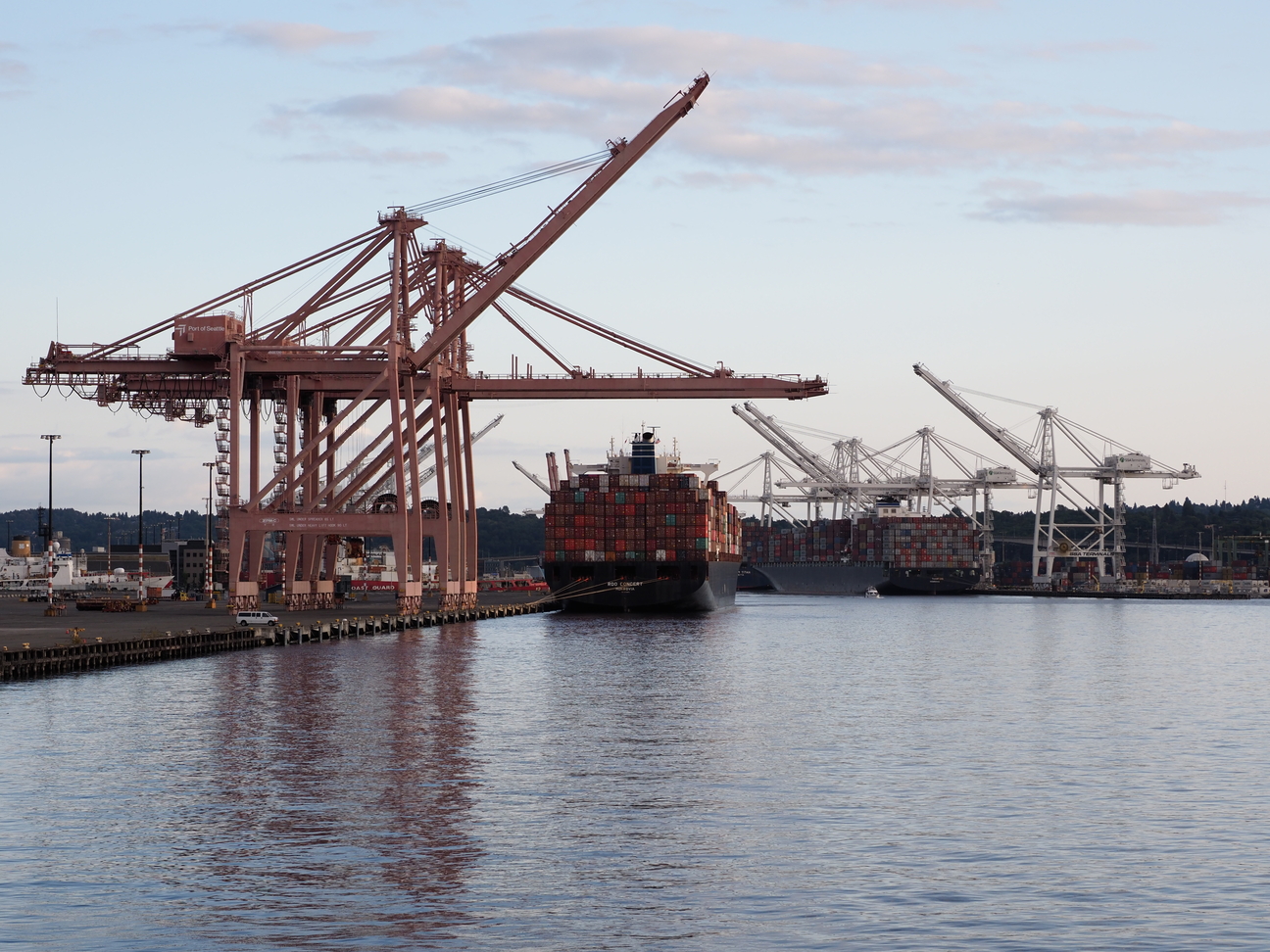The Port of Seattle is one of the primary engines of the Pacific Northwest’s economy, from its marine cargo terminals to Seattle-Tacoma International Airport.
The Port is also a local government in its right, governed independently from the City of Seattle and King County. Although the Port bears Seattle’s name, it shares its boundaries with King County, and port commissioners are elected countywide. Three of the Commission’s five positions were on the ballot this year, constituting a majority of the seats. Each contest attracted two candidates.
In initial Election Night returns, one commissioner jumped out to a big lead and seems assured of wining reelection, while another commissioner was only marginally ahead and a third was in a near tie with their challenger.
Over a hundred thousand votes remain to be counted across King County, so the two close races could see lead changes before the counting ends.
Here’s a look at each race.
Position #1: Calkins vs. Sigler
Ryan Calkins won election to his second term easily against Norman Sigler, with initial returns putting him ahead 73% to 26%.
Ryan had stated that he views the Port as an engine for future job growth, and thus that efficiency of operations and continuing working partnerships with state and federal officials will help maintain the high quality of operations in coming years. He sees the creation of Maritime High School as an additional path, alongside apprenticeships, workforce training and new business guidance, toward creating those jobs and new operations for the Port.
Sigler touted his experience in managing commercial aerospace maintenance costs, assessing commercial properties for environmental hazards and past work as a healthcare strategy consultant for Blue Cross/Blue Shield. Sigler stated that he wanted a specific portion of the Port’s profits to go toward eliminating Port-related pollution, especially at the airport, as well as toward mitigating environmental injustice in adjacent communities.
However, Sigler didn’t raise much money and did not mount a strong campaign.
Position #3: Bowman vs. Mohamed
Stephanie Bowman is in a close race against Hamdi Mohamed, ahead by only 5,500 votes out of over 280,000 cast thus far.
Bowman campaigned on her record of fostering job creation at the Port, her efforts to tackle climate damage, and the Port’s partnership with the Port of Tacoma through the Northwest Seaport Alliance.
She has also cited expanding job training opportunities for youth of color, making stormwater improvements, and developing a noise insulation program for homes close to the airport as accomplishments. But she has also been criticized for taking a position opposing SeaTac’s minimum wage ordinance and her 2015 vote to allow Shell Oil to locate its Arctic drilling operations in Seattle.
Mohamed presently works as an adviser to the King County Executive Office regarding the county’s budget, small business initiatives, community engagement and the county’s COVID-19 response. Her father was a trucker and her mother was a Sea-Tac airport worker, and that experience led her to desire the creation of both re-entry programs for COVID-19-impacted workers and a new Small Business Recovery Taskforce. She says she is committed to making the Port a key player in addressing climate change and its broad electrification.
Mohamed resides in South King County, not far from Seattle-Tacoma International Airport. South King County has historically lacked representation on the Port Commission. If Mohamed wins, the communities close to the Port’s largest facility would have more clout on its five-member governing body.
Position #4: Steinbrueck vs. Hasegawa
Incumbent Peter Steinbrueck is ahead of challenger Toshiko Hasegawa by just under 1,600 votes. He has previously served on the Seattle City Council and his father was architect Victor Steinbrueck, who was instrumental in saving the Pike Place Market back in the 1960s and 1970s.
Like the other two incumbents, he is enthusiastic about reducing pollution and electrifying the Port’s operations. He considers himself a firm environmentalist (especially in his creation of the Port’s first “tree inventory”) and favors equitable access to jobs and apprenticeship programs and working to achieve climate justice at all levels with the waning of the pandemic. He has been criticized as out of touch following several exchanges with activists and other local officials.
Hasegawa is the daughter of State Senator Bob Hasegawa and has previously served on numerous boards on behalf of historically marginalized communities. She has also served as Executive Director of the Washington State Commission on Asian Pacific American Affairs since late 2018. She considers existing funding for mitigation of Port activities for adversely affected communities “a drop in the bucket” and wants significant expansion of the program.
Like former presidential candidate Elizabeth Warren, who she introduced at her final Seattle campaign appearance last year, Hasegawa has proposed a Blue New Deal specific to the needs of the Port and the community it serves, with an emphasis on improved transportation (both via rail and roads), electrification, offshore wind and solar energy installations and union jobs.
Of the three challengers, Hasegawa is best positioned for victory, and could overtake Steinbrueck in the late ballots very easily if the subsequent drops favor her. This is a race we’ll be watching closely through the rest of the counting.


Comments are closed.